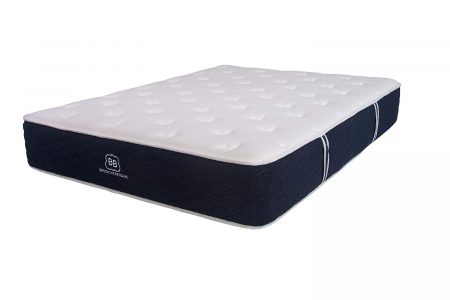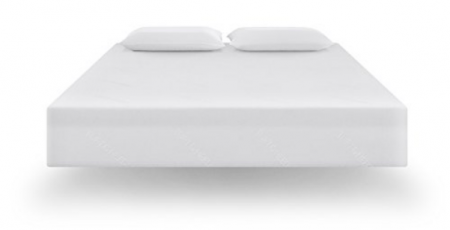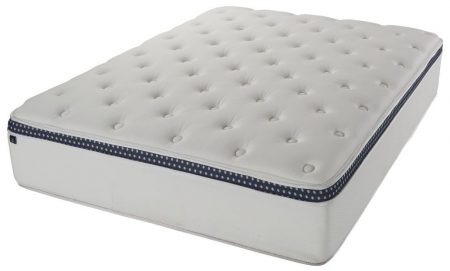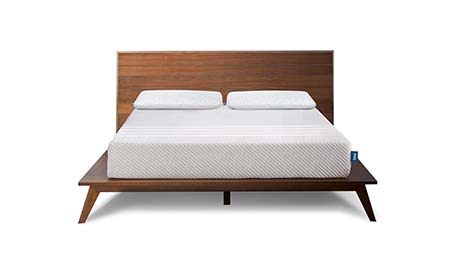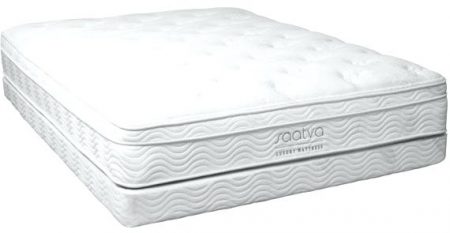Important Considerations for Sleepers with Shoulder Pain
In addition to material composition, sleepers with shoulder pain should take the following factors into account when choosing a mattress:
- Their sleep position
- Their body weight
- Their mattress firmness preferences
We review each of these below.
How Should I Sleep With Shoulder Pain?
Sleep position can be crucial for those with shoulder pain. Most people sleep on their side with their legs tucked in or outstretched. This is considered the healthiest sleep position because it aligns the spine, inhibits snoring, and generally leads to fewer aches and pains. However, for people with shoulder pain, side sleeping may actually cause more discomfort, depending on which side they prefer.
For that reason, many people with shoulder pain prefer sleeping on their backs. Although this position increases the risk of snoring, it can alleviate aches and pains from shoulder-related issues.
Stomach sleeping is also an option, though many doctors discourage this position. Because so many people carry weight in their stomachs, sleeping face-down can lead to uneven weight distribution and shoulder strain.
For individuals with shoulder pain, finding the most comfortable sleep position takes some trial and error. The following table lists recommended sleep positions that may help alleviate your shoulder pain.
Best Sleep Positions for Shoulder Pain
Body Weight
Along with sleep position, the sleeper’s body weight is important for determining the best firmness setting for a mattress.
Sleepers in the lightweight group (less than 130 pounds) typically softer prefer beds that conform to their bodies. Excessively firm mattresses may not conform enough, resulting in uneven support and inadequate pain relief.
Those who are considered average weight (130 to 230 pounds) often find mattresses with moderate firmness settings most comfortable. The surface conforms to a noticeable extent without sagging too much, but the sleeper still experiences pain and pressure relief.
Most sleepers in the heavyweight group (more than 230 pounds) need firmer beds with minimal conforming. Softer beds often sink too much, and this can significantly worsen shoulder pain.
Mattress Firmness
Firmness refers to how closely the mattress cushions and conforms to the sleeper’s body. Mattress firmness is rated on a 1-10 scale, with 1 being the softest and 10 the firmest. Here’s how it breaks down:
- Extra Soft (1-2): The mattress conforms very closely and sinks deeply beneath the sleeper’s body.
- Soft (3): The mattress conforms closely and sinks to a noticeable extent.
- Medium Soft (4): The mattress conforms somewhat closely, but there is minimal sinkage.
- Medium (5): The mattress conforms to a moderate extent with little to no sinkage.
- Medium Firm (6): The mattress offers minimal conforming and won’t sink unless the sleeper is exceptionally heavy.
- Firm (7-8): The mattress conforms little, if at all, and support is flat and even across the surface.
- Extra Firm (9-10): The mattress has a hard, flat surface that does not conform or sink to any noticeable extent.
It’s important to note that ‘Extra Soft’ and ‘Extra Firm’ mattresses are extremely rare. The majority of beds sold today fall between a 3 (soft) and 8 (firm) on the 1-10 firmness scale.
A sleeper’s preferred firmness largely depends on two factors: their sleep position and body weight. The table below lists optimal firmness settings for sleepers in different weight groups. However, please note these ratings are subjective and may not be accurate for some individuals.
